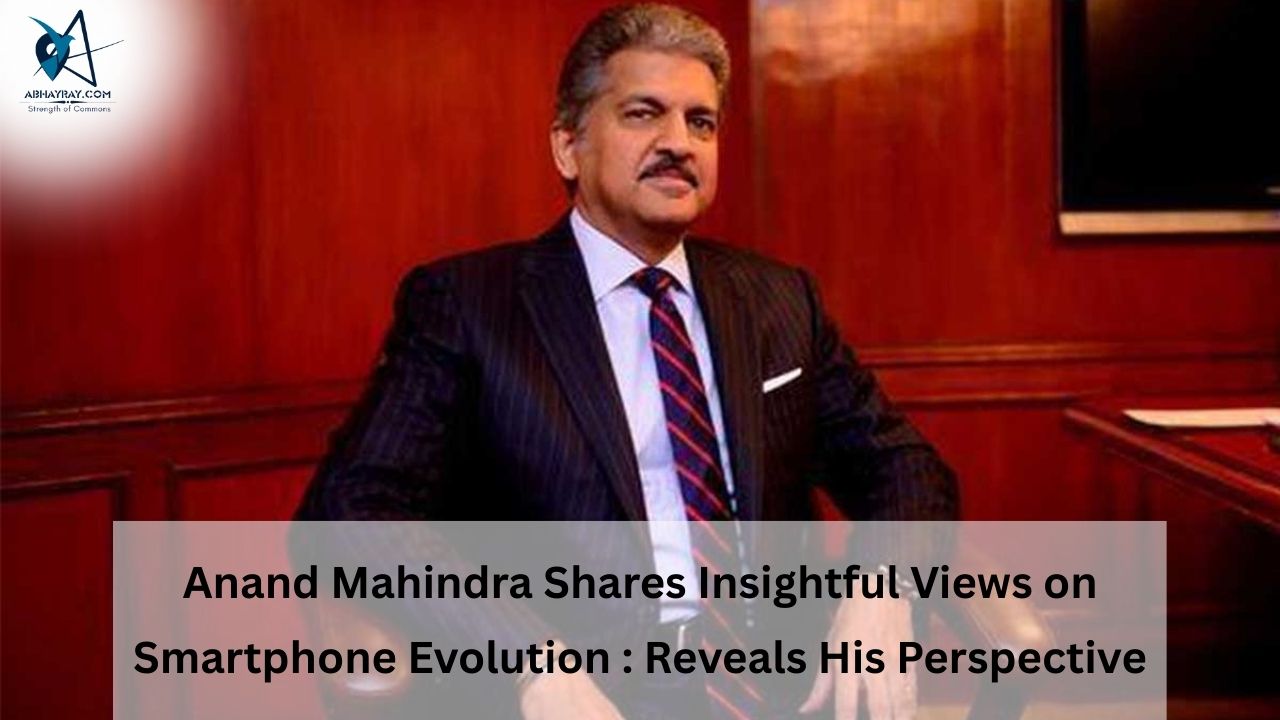Introduction
Industrialist Tech Mahindra Chairman Anand Mahindra took a trip down memory lane as he shared a video that showcased the evolution of mobile phones from 1991 to 2024 on X (earlier Twitter).While expressing curiosity about the potential for brain-implanted mobile technology, similar to Elon Musk-owned Neurotech company Neuralink’s advancements.
Anand Mahindra Highlights the Shift in Mobile Technology
Anand Mahindra, known for his engaging social media presence, wrote, “Fascinating. Yes, I’ve been around long enough to witness each and every one of these avatars of the ubiquitous cell phone. But I’m not sure I want to be around long enough to see a cellphone be installed and implanted in our brains!” The video illustrated the dramatic shift from bulky mobile handsets of the early ’90s to todays sleek, A1-powered smartphones. This progression sparked a variety of reactions from social media users, ranging from philosophical reflections to humorous takes on the topic.
Social Media Reacts to the Future of Mobile Phones
One user cited Canadian philosopher Marshall McLuhan’s famous quote, “First, we shape our tools, and then our tools shape us,” before adding, “From bricks to flip phones to sleek A1-driven devices, every innovation seemed unthinkable before it became indispensable. Neural implants may sound futuristic today, but so did carrying a supercomputer in our pockets 20 years ago. The real question is: Will we control tech, or will it control us?”
Another user, enthusiastic about technology, weighed in on the potential future of mobile phones: “As a tech enthusiast, I understand how fast cell phones evolved. Just imagine when theyre implanted in our brains—faster thinking or endless notifications? Scary and exciting future ahead!”
For those wary of modern tech’s quirks, a witty comment summed up common concerns: “Plot twist: The implant will still need a software update every two days and run out of storage in a month.” Reflecting on the evolution of mobile devices, another user noted, “Began as large, bulky devices, then shrank in size over time, only to trend back toward larger screens with the advent of smartphones.” Mahindra’s take on the subject resonated with many, as the rapid advancement of mobile technology continues to spark discussions about its implications. While innovations have made life more convenient, the question remains: how far is too far?
Anand Mahindra praises technology on X
This is not the first time Mahindra has praised other innovations. In October 2024, he took to X to praise four IIT Delhi graduates for inventing Aroleap X, a smart, wall-mounted home gym designed for small spaces. The compact equipment offers 150+ exercises, A1-powered training, and 100 hours of fitness content, catering to urban living trends. Zerodha founder Nithin Kamath has also invested in the startup.
In his post, Mahindra wrote: “Home gym created by 4 IIT grads. No rocket science here.But a clever convergence of mechanics & physical therapy principles to design a product that has global potential. In small apartments & even in Business Hotel rooms! Bravo!”
Earlier, in August last year, Mahindra shared a video on X featuring a Chinese man’s innovative mosquito-killing device amid rising dengue cases. The machine uses a laser and radar system to target mosquitoes, which Mahindra likened to an “Iron Dome” for homes, referencing Israel’s missile defense system. He expressed interest in acquiring the device. “With dengue on the rise in Mumbai, I’m trying to figure out how to acquire this miniature cannon, invented by a Chinese man, which can seek out & destroy mosquitoes! An Iron Dome for your Home.., “he wrote.
A Skeptical Take on Future Tech: Brain-Implanted Phones
In his post, Anand Mahindra shared his enthusiasm for the remarkable progression of mobile phones, showcasing how far the technology has come since 1991. However, he expressed doubts about the future of mobile technology, specifically regarding the concept of implanting phones directly into the human brain. He humorously commented that while the mobile phone evolution is exciting, he is uncertain if he wants to live long enough to see the day when phones are physically embedded in our brains. Mahindra’s take reflects a broader conversation about the rapid pace of technological advancements and the ethical and practical concerns that accompany them. His message invites reflection on the direction in which technology is heading encouraging society to consider the potential consequences of such innovations, even as we marvel at the possibilities they bring.
Conclusion
Anand Mahindra’s post on the evolution of mobile phones serves as both a celebration of technological progress and a thought-provoking reflection on the future. While he acknowledges the incredible advancements we’ve seen, his skepticism about brain-implanted phones underscores a growing concern about the limits of technology. As we embrace new innovations, Mahindra’s message encourages us to think critically about the implications of these developments asking whether we, as individuals and society, are ready for the potential consequences. The debate he sparks reminds us that, while technology can enhance our lives, it is important to consider its ethical, social, and personal impacts as we move forward.
GMICapitals.com RaysVeda.com GetMyStartup.com LawCanal.com GetMyIndia.com ZinCob.com Angeltors.com

